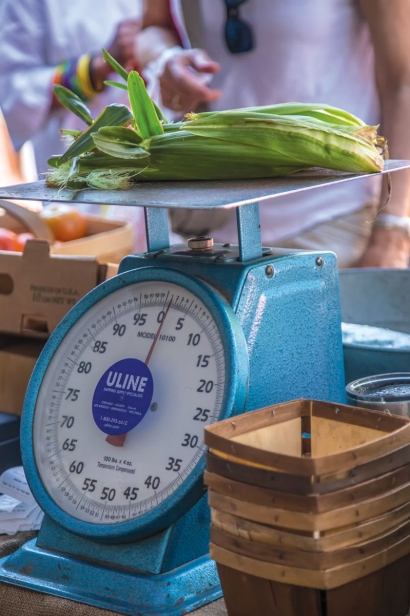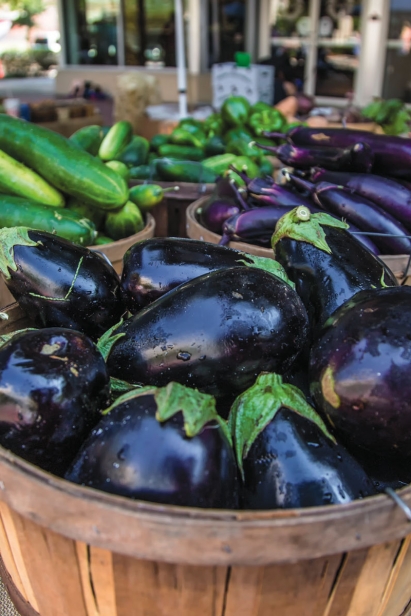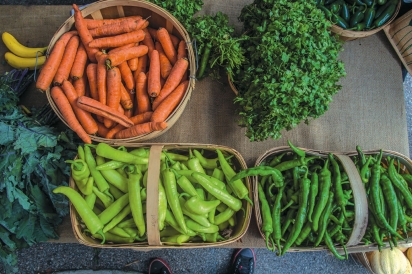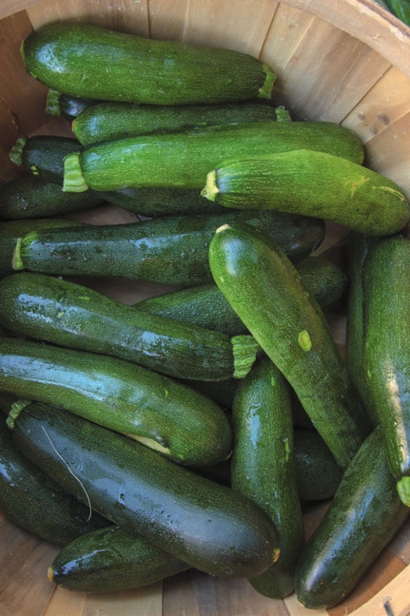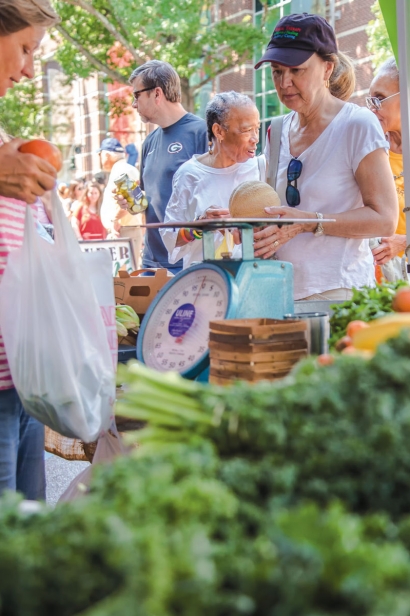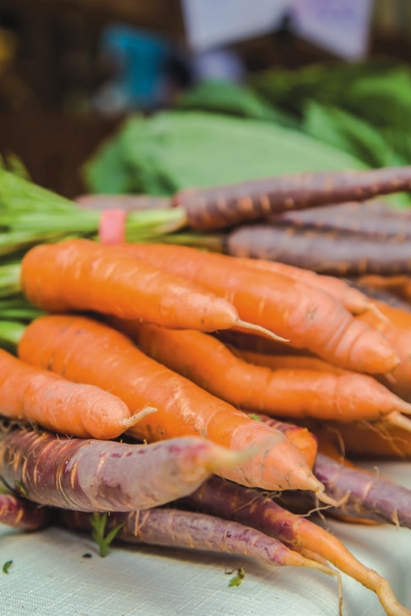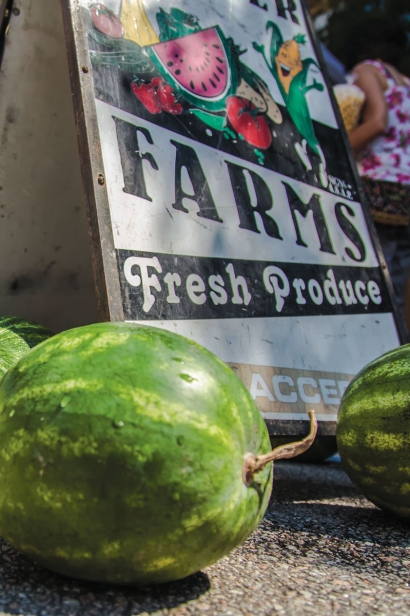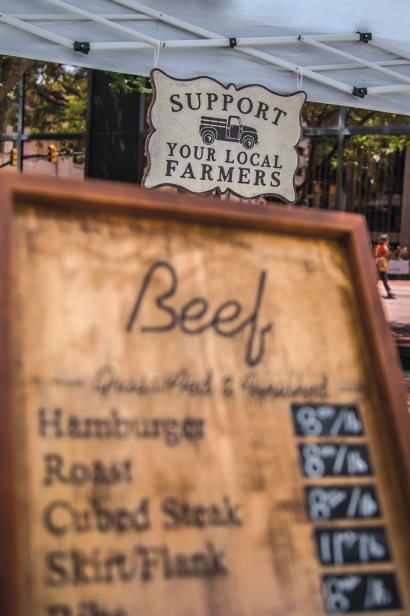Discovering Local Roots at a Roadside Farm Stand
Summer Memories
The summer before I turned 15, my very first job was at a roadside fruit and vegetable stand.
Owned by the same family who farmed the land surrounding it, the produce stand sold bushels upon bushels of tomatoes, green beans, corn, squash, peaches and watermelons.
As a gangly teenager who would’ve preferred hanging out by a pool or in an air-conditioned mall, I did not love it. Now, with a few extra decades on me, nostalgia has morphed that summertime memory into one of the best jobs I’ve ever had.
That produce stand was no small operation. Every day of the week, I was mystified by the sheer volume of people who would descend upon it. Emerging from their hastily parked cars, enraptured by visions of tomatoes stacked in little green baskets, customers would clamor for news of Silver Queen corn and its expected harvest date. As I bagged their selections and tallied their totals, they would continually add more items to their orders—handing me a cantaloupe or two after inhaling deeply and expounding on their methods for determining the perfect levels of ripeness for tomorrow’s breakfast.
Our customers absolutely knew what they were looking for, and they weren’t shy about thumping a watermelon or snapping a bean to find the perfect piece of produce. Over the course of that hot summer, my senses grew keen—I learned which produce to push towards the front of the displays. I knew by touch and smell which tomatoes were at their peak and which ones were on the verge of splitting. I knew which peaches were destined for the jam makers, and which ones were for the out-of-hand eaters.
As I sorted through the truck bed of that coveted Silver Queen corn, still holding heat from the fields, I’d peel back the silky tops just enough to observe the straight lines of rounded kernels. I’d flick away any resident creepy crawlies, and when I encountered ears that were too worm-eaten or skimpy-kerneled for our discerning customers, I’d toss them into the wheel barrow destined for the farmer’s horses waiting patiently for their midday meal. And as that year’s bumper crop came in faster than we could sell it, we’d gather in the farm kitchen to help the family’s ancient matriarch preserve the surplus corn—husking the ears, removing the kernels with a paring knife, and then scraping down the cobs to capture every drop of the milky pulp.
I got an education that summer, not just on how much hot work it takes to earn a dollar, but also on the fleeting nature of perfection. I learned that tomatoes don’t last forever, and that the sacred spot between underripe and overripe is worth every moment of anticipation.
These days, there’s a lot of talk about the importance of buying local that I simply don’t remember hearing that summer. I certainly wasn’t thinking about issues of sustainability or whether the farm would make enough money during those busy summer days to carry them through the rest of the year. I’m guessing our customers weren’t thinking about those things either—they just wanted good corn and good tomatoes.
As a society of busy people on the move looking for convenience, the concept of locally grown food fell by the wayside for a time. Since the 1980s, as we moved towards a more centralized food system in the name of efficiency and profitability, South Carolina lost almost 400,000 acres of farmland, with only 10% of the food we eat in state actually farmed here. Our food system transformed from local to global, from ecological to industrial, with an emphasis on production and profit. As a result, most South Carolinians no longer have a meaningful connection to where their food comes from.
Today, however, as we’re beginning to understand the negative effects of our hurry-up culture, the experience of waiting for a tomato to ripen on the vine has regained a certain appeal. Resetting our internal clocks by getting back in synch with the seasons, we’ve reclaimed a little order in the chaos of our hectic lives, rediscovering a sense of connection we didn’t realize we had lost.
As it turns out, local fresh produce is the very best kind of medicine. It benefits not just the body and the soul, but also the community at-large. In addition to being a joy to eat, local food has a ripple effect that extends far beyond the moment of consumption. Eating local not only improves food quality and variety, it also makes positive contributions to the economy, helps save farmland, reduces transportation costs and energy usage, creates meaningful connections and relationships in the community and restores integrity to our food system.
Local food has always been life-giving. It gives life in the obvious ways—healthy food helps our bodies operate better and live longer—but it also gives life to our communities. It adds richness and flavor to the local culture. It brings people together. And as we in Columbia and the surrounding areas reconnect with the land that sustains us, there are increasingly more opportunities to spend our food dollars locally—creating a positive loop that in turn supports even more small farms, even more locally sourced restaurants and even more local food markets.
Eating local is about living local, and as we continue to rebuild our local food systems, we’re also rebuilding our communities. And as we savor this fleeting season of summer, its ripe and flavorful bounty is a delicious reminder to slow down, reconnect and let the local harvest feed us.



